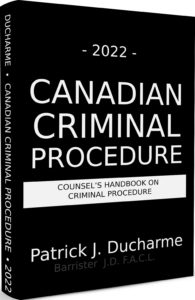
In Canada v. Bedford three current or former prostitutes applied for a declaration that sections 210, 212(1) and 213(1) of the Code infringe the right to life, liberty and security of the person pursuant to section 7 of the Charter. The Supreme Court of Canada agreed. The three impugned sections, concerned with preventing public nuisance and exploitation of prostitutes, were unconstitutional as offending section 7 and failed to pass section 1 scrutiny. The court found that these provisions did not merely impose conditions on how prostitutes operate, they in fact, imposed dangerous conditions on prostitutes thereby preventing people (the prostitutes) working in a risky but legal activity, from taking steps to protect themselves from those risks.
The court also found that the regulation of prostitution is a complex and delicate matter. It therefore permitted the government one year from the date of its decision to devise a new approach reflecting different elements of the existing regime.
The federal government’s controversial anti-prostitution legislation differs markedly from what most were expecting would be legislation that acknowledges prostitution exists, and, provides for a prostitute’s safety.
The legislation instead criminalizes the buying of sex. It effectively makes prostitution illegal, although it was legal prior to the Supreme Court of Canada’s decision in Bedford. Penalties include custodial sentences up to five years in some cases and minimum cash penalties that increase after a first conviction. It defines the term “sexual service” in broad terms such that activities in adult entertainment parlors such as lap dancing, and activities in massage parlors, such as masturbation would definitely be included within the meaning of sexual services.
The Protection Of Communities and Exploited Persons Act came into force on December 6, 2014.
It amends the Criminal Code, among other things, to:
create an offence that prohibits purchasing sexual services or communicating in any place for that purpose;
create an offence that prohibits receiving a material benefit that derived from the commission of an offence referred to in paragraph (a);
create an offence that prohibits the advertisement of sexual services offered for sale and to authorize the courts to order the seizure of materials containing such advertisements and their removal from the internet;
modernize the offence that prohibits the procurement of persons for the purpose of prostitution;
create an offence that prohibits communicating – for the purpose of selling sexual services – in a public place, or in any place open to public view, that is or is next to a school ground, playground or daycare centre;
ensure consistency between prostitution offences and the existing human trafficking offences; and
specify that, for the purposes of certain offences, a weapon includes any thing used, designed to be used or intended for use in binding or tying up a person against their will.
The objective of the legislation is far different than the aim of the Supreme Court of Canada’s decision in Bedford. This legislation unabashedly seeks to eliminate all forms of prostitution, by criminalizing every aspect of the world’s oldest profession. It operates from the naïve and inaccurate premise that the prostitutes are always and everywhere “victims” in an industry that recruits them and uses them against their wishes for financial benefit.
It fails to recognize that many prostitutes are not forced into prostitution. Instead, they enter prostitution intentionally and purposefully. The legislation mocks the Supreme Court of Canada’s decision by its paternalistic and inaccurate description of prostitution as a form of sexual exploitation that “disproportionately and negatively impacts on women and girls.” Its title, “Protection of Communities and Exploited Persons Act” reads like a bad script drafted by old white men pontificating of the smarmy life of others that they have been ordered to protect. The protection is delivered by eliminating them. This legislation will last in its present form only as long as it takes to arrive at the Supreme Court of Canada again.
The prostitutes who led the successful challenge in the Supreme Court of Canada only asked to be allowed to ply their trade in safety. It was a modest request. Their safety concerns were found to be legitimate. They did not claim to be exploited. They did not say they were “recruited” or “forced” into the business. Until this legislation is also found to be unconstitutional, they will be required to work in an environment that is much more dangerous than the one they sought to improve.
Prostitutes will not be allowed to work in a business setting, employ receptionists, advertise their services or have security guards. Every other person except “the prostitute” under this legislation will be committing a criminal offence. The prostitutes, according to this legislation, are “objects” purchased by those with money and power. They, according to this legislation, allow men, the primary purchasers of sexual services, to access their bodies, thereby demeaning and degrading the prostitutes. The government means to stop the degradation. The prostitutes, under this legislation, have failed to recognize that they function without any sense of human dignity, and are considered as blight on society. This legislation will be viewed by most as legislative abuse. It mocks the Supreme Court of Canada’s decision in Bedford.

The above is the an excerpt of Patrick J Ducharme’s book, Canadian Criminal Procedure, available at Amazon or in bulk through MedicaLegal Publishing along with Criminal Trial Strategies.
Subscribe to Patrick Ducharme’s Youtube Channel
